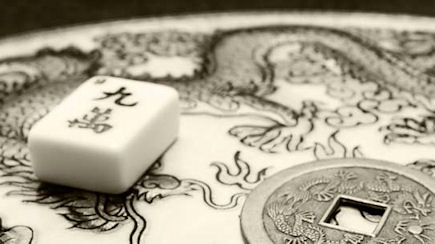This article first appeared in the Mar/Apr 2010 issue of World Gaming magazine.
Learning Mahjong is a journey. One thing I will always remember from the days when I had just started playing is that one of my friends told me that the Peace hand would become my bread and butter and lead to most of my winning games. He was absolutely right.
One of the most important hands in Mahjong, this hand is so versatile and common that it really deserves its own column and that is what Puyo and I have prepared for you this month.
The hand was originally made because of its lack of Base Points (fu). The pair could not be of Value (no Dragons, Seat Winds or Round Winds) and the final wait had to be open-ended. In the current rule manifestations, these original guidelines only apply in Riichi. Other rules have changed the strict conditions in the hand, but it still exists in some way or another in each of the major rule sets.
Peace Hand (Pinfu) – Riichi
In Riichi, Peace/Pinfu is the most complicated-looking and adaptable hand in the game. The hand must be only made up of sequences, cannot include Value Tiles as the pair and must be open-ended in the final wait. Pinfu can be combined with: Riichi, Inside Hand, Double Run, Three Colored Runs, Mixed Outside Hand, Two Double Runs, Pure Outside Hand, Half Flush and Flush.
With the strict restrictions set in Riichi, completing Pinfu does require some luck, but since you can always add riichi to the hand (because Pinfu must be concealed), it will often generate enormous profits. The relevance of this hand gives us insight to why hands with runs are much more common in Riichi than in other rule sets.
Pinfu/Peace Example:
![]()
![]()
Win
All Sequences – WSOM
The difference between this WSOM hand and the Riichi equivalent is the lack of tedious rules. Any pair is allowed and there are no restrictions on the final wait. On the other hand, the lack of complications shows in the cheap score of 5 points. Remember, you can combine this hand with many of the other hands in the game, just like you can in Riichi.
All Sequences Example:
![]()
![]()
Win
All Chows – Chinese Official Rules
The All Sequences hand does not allow Honors as the pair, but there are no restrictions on the final wait. The best hand to combine this with is Mixed Shifted Chows. All Chows is worth 2 points in CO rules. As you need 8 points to win in CO, this hand is often combined with 6-8 point hands such as Three Same Sequences.
All Chows Example:
![]()
![]()
Win
All Sequences also exists in Chinese Official, Hong Kong and Taiwan rule sets. They generally do not have any restrictions on the pair or waits, but the rewards are scant compared to Riichi. Pinfu generally co-exists with other valuable hands such as pure one-suit, but it is not a favourite.
The key to Peace/Pinfu is to master a few “compound sequences.”
- 3445-form: Instead of seeing this as a complete 345 run, it should be treated as two open-ended runs: 34+45. 2, 3, 5 and 6 are the best tiles to draw here.
- 3456-form: This can be also viewed as two open-ended runs: 34+56. A 2 or a 7 will give you an excellent 3-sided wait.
- 3457-form: Similarly this can be treated as two runs 34+57. Drawing an 8 is good, 6 is better, and don’t forget that 2 and 5 are also valid tiles.
Finally let’s see these combinations in action.
![]()
Early in the hand discarding the 89b here is your best bet. At the first glance 4c and 8d are will get your hand closer to Ready but try to think of them as “compound sequences.” After we discard the 9b, there are tons of valid tiles to advance the hand and give you an open-ended wait.







